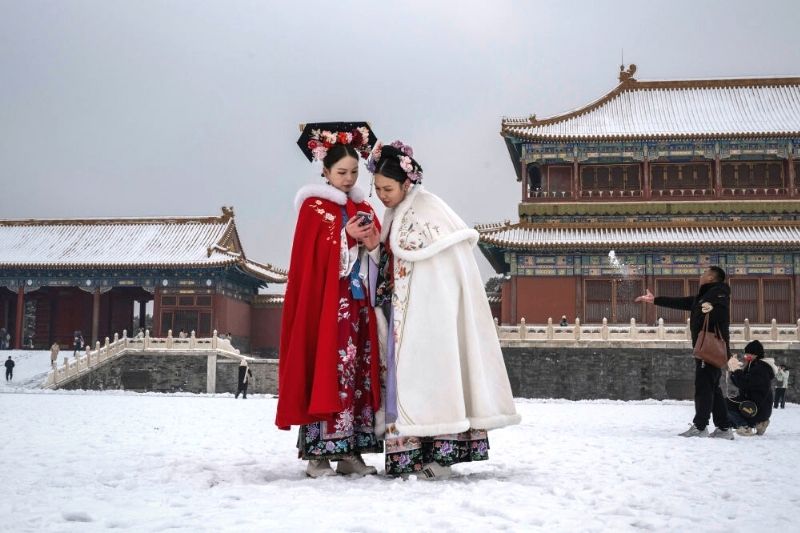With the annual outpouring of angst around Australia Day over for another year, it is worth thinking about how expressions of national identity take place. In today’s fast-paced, highly edited social media ecosystem there is often neither enough video time nor keyboard characters for nuanced conversation.

Discourse on issues of national identity can become reduced to slogans and memes, especially through the process referred to as synecdoche, where the part of something is used to refer to a greater whole – think for example of how the phrase ‘Australia lost to the heroics of Shamar Joseph’ means not the whole continent but 11 players on a cricket ground. The more reductive the discourse the more it is open to becoming merely performative. For instance, think of the manner in which the sight of an Israeli flag or a Palestinian flag – or even an Australian flag - draped over a car window has come to carry so much presumed meaning in the past months. This is not to say of course that Australia is the only place where such discourse has been constricted to visual shorthand.
China, for instance, is another society that engages in expressions of national identity. I was recently travelling there and saw how mainstream the fad known as hanfu has become. This is the wearing of ancient costumes, especially around monuments like the Forbidden City in Beijing or around historical spots like the Drum and Bell Towers of Xi’an. Prior to 2020, one would see examples of people wearing hanfu in tourist cities like Suzhou, but not necessarily in many other places. These cities are notable for their reconstructed historical markets and Chinese gardens and thus are ideally suited for social media posts of the wearers’ posing in front of such places. Now it seems as though on every scenic street corner there is a cluster of young women dressed in period costume, with a few boyfriends tagging along holding the bags and trying not to trip over their own flowing robes.
At one level, this newest of Chinese fads should not raise many eyebrows as it simply joins a long list of fads that has swept through China in recent years, as for instance finger spinners, paying too much for older European soccer players to play in the Chinese Premier League and drinking high-priced Australian red wine. Even so, arguably, none of these fads carry as much symbolic weight as that of hanfu. An article in the South China Morning Post in late 2023 reported that there are now well over 10 million hanfu customers in China, and the number of hanfu related businesses has likewise increased dramatically over the past decade. This includes the businesses that manufacture the silken robes and accessories to shops that rent and sell the costumes, complete with a make-up and hair styling session, to opportunistic street photographers who set up their tripods and their ring lights and corner the prime photogenic locations. Additionally, many of those wearing hanfu are not just doing it for a bit of a laugh but are also hopeful of boosting their own social media engagements and perhaps make money in the process.
Where the fad of hanfu crosses over into more serious territory, however, becomes clearer once one considers the origins of the word. ‘Fu’ is one word for clothing or garments while the ‘han’ prefix refers to the dynasty that reigned China for over four centuries from around 202 BC to 220 AD (give or take a few years for various interregnums), which in turn took its name from the powerful river that flowed through nearby lands. Hanfu is thus clothing that originates from an ancient era, one where the Chinese state of the time dominated its neighbours and prided itself upon its significant cultural and commercial achievements. Moreover the Chinese culture that is being lauded is one that is specifically not Mongolian or Tibetan or Manchu or any of the myriad other minorities that comprise the modern Chinese polity but rather is the dominant ethnic group, the Han.
'In donning hanfu the wearer thus engages in a performative act of cultural and political hegemony even if they themselves are not aware of this and are merely just doing it for fun.'
In donning hanfu the wearer thus engages in a performative act of cultural and political hegemony even if they themselves are not aware of this and are merely just doing it for fun. For every person playing at dress up every subsequent social media post reminds its citizens and viewers elsewhere that China is a strong and ancient culture, mighty in deed and design, and one which is keen to flex its political and cultural muscles. The flowing robes of hanfu are therefore in fact a multi-layered expression of national chauvinism, for all the beauty of the colours and the joy of the wearers. The government thus won’t be discouraging this fad anytime soon.
Dr Jeremy Clarke, PhD is the Director of Sino-Immersions Pty Ltd and runs a wine bar and bookstore in Boorowa, NSW.
Main image: Women wear traditional Hanfu clothing as they look at a mobile phone while visiting the Forbidden City a day after the first snowfall of the winter on 12 December, 2023 in Beijing, China. (Kevin Frayer/Getty Images)